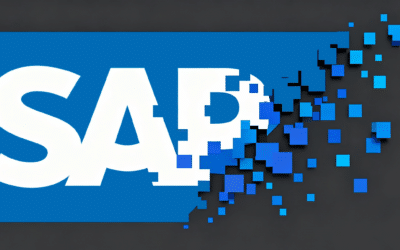How to Reduce Environment Downtime
by Rohit Gupta
In today’s world, generally IT Operations are outsourced to multiple vendors. On top of the process defined by the organisation, each vendor also brings in their own set of processes and tools for managing their Test Environment. As a test environment manager, you need to review these processes and understand which ones have been successful and which one needs improvement or modification.
Also, you need to check the existing implemented projects to understand if these processes were followed properly. Each process should be documented with all dependencies on systems and audited in time for better control. Doing a health check on the processes help the organisation in improving and bringing new changes, which leads to growth and better test environment management.
Enov8 EcoSystem allows the organisations to view their processes from different perspectives and enables them to understand their dependencies. It also allows environment managers how to conduct impact analysis in case of a failure in processes or systems. Enov8 EcoSystem has in built audit & reporting capabilities which, give alerts if action is required.
User Access Management
Data Integrity is one of the crucial elements in test environment management. Wrong data can lead to application failures, which results in environment downtimes. Additionally, unauthorized access to environments can lead to wrong code or configuration version deployments/changes, which can also result in environment breakage.
To avoid this downtime, proper user access control should be in place throughout test environments. User access also needs to be audited from time to time so that only the right users have access to make changes to environments and data. This will lead to better test environment control and increase in availability.
As part of July 2017 release, enov8 ecosystem has implemented a new User Access Management Module which enables organisations in controlling and auditing their user access across environments. It has in built reports & dashboards which helps in better management of user access.
Contention Management
In today’s faced paced market, each organisation is at its toes to deliver the products in the market. This means lots of projects running in parallel with different requirements. These requirements sometimes lead to contention with other projects for the same systems or environments. Misunderstanding of these contentions can lead to overriding changes in the same environment, which results in downtime for the projects; thus missing crucial timelines. To control these types of downtimes, an environment manager needs to have a complete view of these requirements and contentions.
Enov8 EcoSystem environment and release management module allows the organisations to track contentions not only from environment perspective but also from the requirements perspective with comparison to another project. The advanced level reporting allows the projects to understand if there is any gap in their requirements which they have missed as part of their analysis.
ITSM Processes
In our recent survey, we found that more than 80% of the organisations did not have a proper ITSM solution for test environments, in comparison to production environments. There was no proper change process in place for test environment which lead to chaos, resulting in downtime. Therefore, organisations need a proper CMDB solution along with ITSM for managing their test environments configurations.
Enov8 provides inbuilt ITSM capabilities to organisations. It also allows integration with an organisation’s existing ITSM products to provide more visibility to their environments. Their visual CMDB and Connectivity views provide users with an end to end view of the whole landscape.
Relevant Articles
Enterprise Release Management: A Comprehensive Guide
Enterprise Release Management (ERM) is a set of end-to-end practices that enable large organizations to effectively manage software releases. ERM is uniquely designed for the challenges of multiple teams building and releasing software simultaneously. ERM establishes...
Your Essential Test Environment Management Checklist
“Test Environment Management Checklist.” Yep, that sounds like a mouthful, but don’t let that discourage you. The idea here is quite simple—adopting a checklist to evaluate the soundness of your test environment management approach. Even though the idea sounds simple...
A Detailed Guide to SAP Data Masking
SAP systems handle some of the most sensitive data in the enterprise: financial transactions, HR information, supplier records, customer profiles, operational details, and more. For that reason, copying production data into non-production systems without modification...
Release vs Deployment Management: What’s the Difference?
In the always-an-adventure world of IT service management, there are several key processes that are essential for delivering high-quality services to customers and end-users. Two of the most critical processes are release management and deployment management....
7 Tools to Help with Application Rationalization
Application rationalization is the process of identifying which applications an organization should keep, update, consolidate, or retire. Think of it as a financial adviser, but instead of your investment portfolio, it's your application portfolio. Most companies take...
Pairing DevOps with Test Environment Management
For many organizations, DevOps is the best practice for efficiency. However, this model doesn’t come easily as the organization needs to put certain things in place. For example, the firm needs to incorporate the right tools to ensure its delivery pipeline and...










